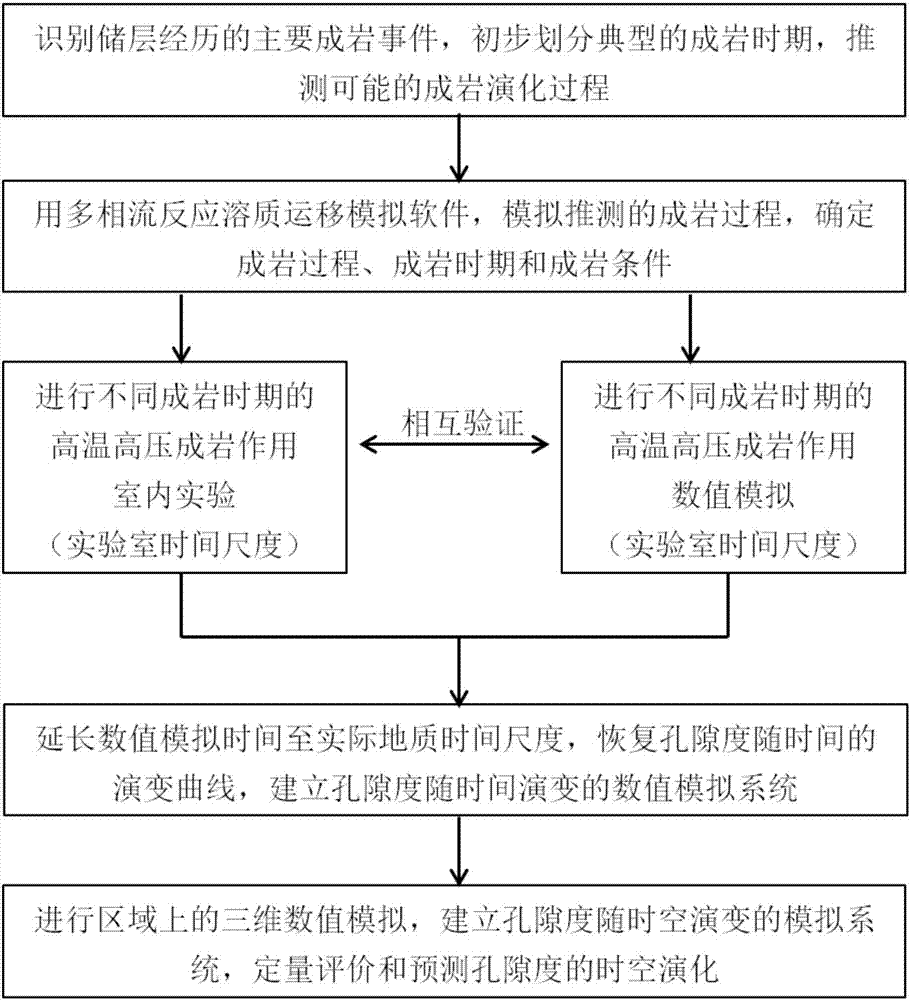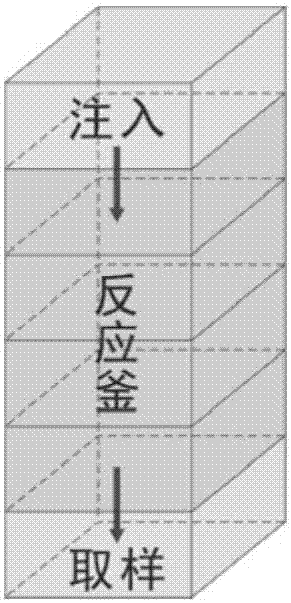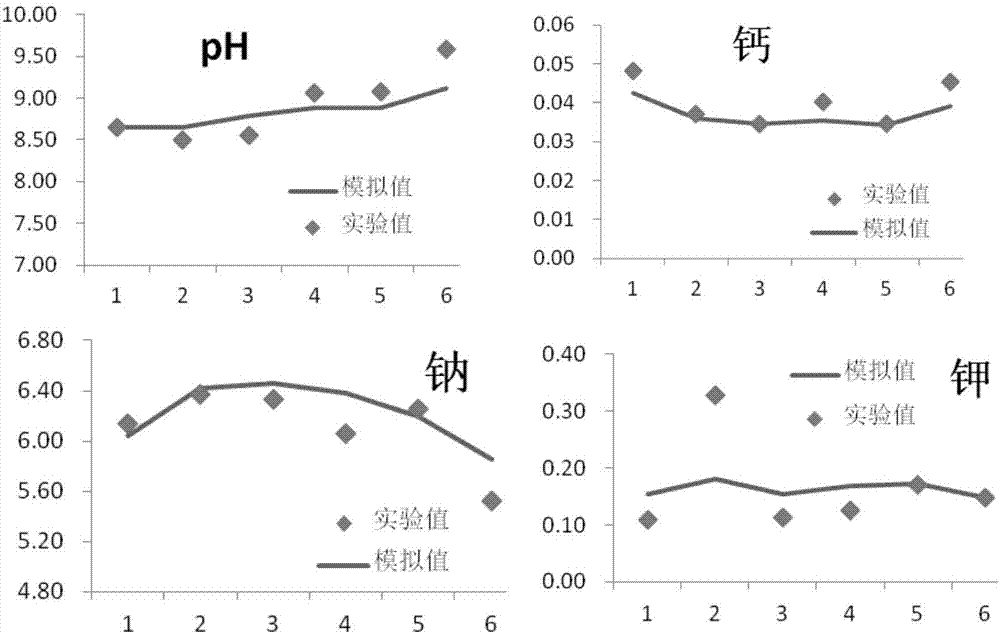Method of quantitatively evaluating space-time evolution of porosity during reservoir diagenesis evolutionary process
An evolution process and quantitative evaluation technology, applied in the field of petroleum exploration, can solve problems such as complex process, unpredictable porosity change, single typical diagenesis, etc., and achieve the effect of improving production efficiency
- Summary
- Abstract
- Description
- Claims
- Application Information
AI Technical Summary
Problems solved by technology
Method used
Image
Examples
Embodiment 1
[0047] Research Background
[0048] The northern Ordos gas field has huge oil and gas resources, and the Shihezi Formation is the main gas producing layer. After a long and complicated geological evolution, the Shihezi Formation reservoir has undergone a series of intense diagenesis. The current average porosity is only 0.06 and the average permeability is only 1mD. It is a tight sandstone reservoir with low porosity and low permeability. The improvement of the reservoir has made the reservoirs have strong heterogeneity, leading to the problem of "low permeability, low pressure, low production and low abundance" in the exploitation of tight sandstone gas. At present, the formation mechanism of the tight sandstone reservoirs in the Shihezi Formation is controversial. The time and process of the tightness of the reservoirs is still uncertain, that is, the evolution process of porosity is not clear, resulting in low production efficiency of tight sandstone gas. Through the technolo...
PUM
 Login to View More
Login to View More Abstract
Description
Claims
Application Information
 Login to View More
Login to View More - R&D
- Intellectual Property
- Life Sciences
- Materials
- Tech Scout
- Unparalleled Data Quality
- Higher Quality Content
- 60% Fewer Hallucinations
Browse by: Latest US Patents, China's latest patents, Technical Efficacy Thesaurus, Application Domain, Technology Topic, Popular Technical Reports.
© 2025 PatSnap. All rights reserved.Legal|Privacy policy|Modern Slavery Act Transparency Statement|Sitemap|About US| Contact US: help@patsnap.com



